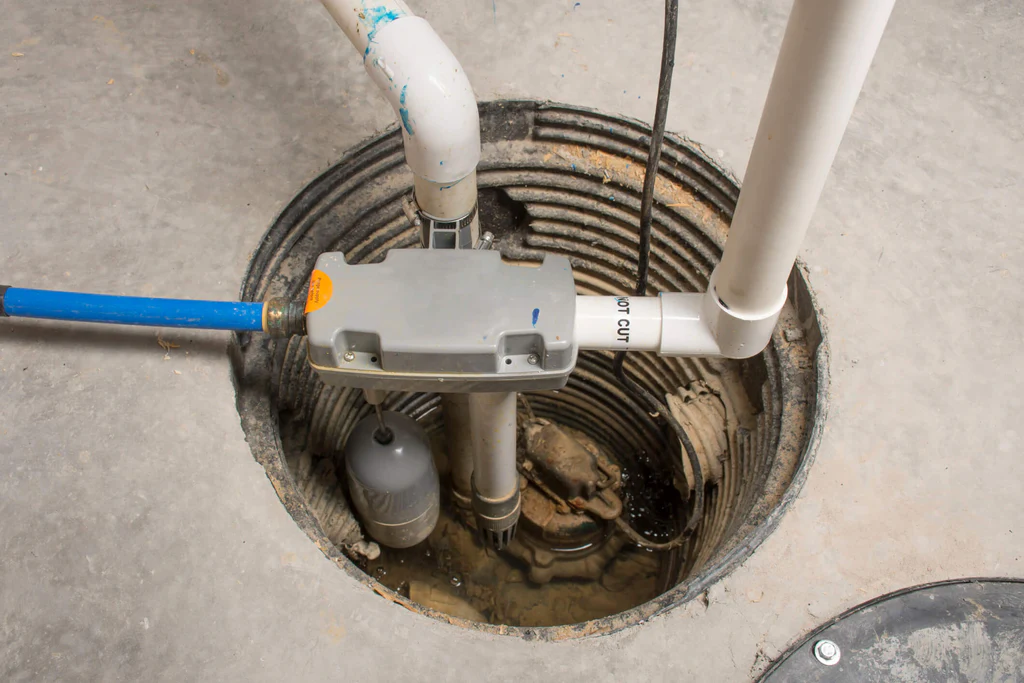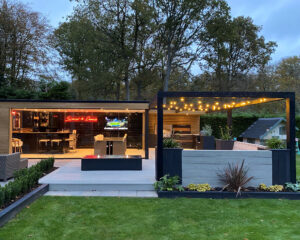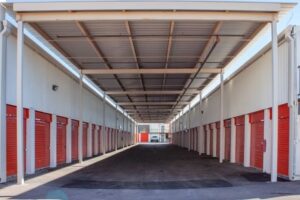Sump Pump Vs. Submersible Pump: Which One Is Right For Water Control?
4 min read
When it comes to managing water intrusion and keeping your property dry, choosing the right type of pump is essential. Both sump pumps and submersible pumps are designed to move water from one place to another, but they operate differently and are suited for distinct situations. Whether you’re looking to waterproof your basement, manage flooding, or drain a pool or pond, understanding the core differences between these pumps is crucial. Let’s discover the differences between sump pump and submersible pump for effective waterproofing and find out which one works best for your needs.
What Is A Sump Pump?
A sump basin, which is a pit excavated into the lowest area of your crawl space or basement, is usually where a sump pump is placed. Its main function is to drain the sump basin of water that has accumulated there, typically as a result of rain or groundwater leaking through the foundation. When the water level in the basin rises to a certain point, the pump activates and directs the water away from your home through a discharge pipe.
The main types are pedestal and submersible sump pumps. The pedestal sump pump has the motor mounted above the basin, making it easier to service but noisier during operation. On the other hand, a submersible sump pump sits inside the basin and is designed to work underwater, making it quieter and more space-efficient.
What Is A Submersible Pump?
A submersible pump, in a broader sense, refers to any pump that operates while fully submerged in the fluid it’s pumping. Unlike a sump pump, which is used specifically for indoor waterproofing, submersible pumps serve multiple purposes. These include draining pools, emptying tanks, dewatering flooded areas, and even handling industrial waste or sewage.
The entire unit, including the motor, is hermetically sealed and submerged in water. This design helps in cooling the motor and allows the pump to function without risk of overheating. Submersible pumps are known for their durability, quiet operation, and ability to handle more significant volumes of water and solids compared to standard sump pumps.
Key Differences Between The Two Pumps
While both types of pumps are effective for water control, their differences lie in design, application, and performance. One major point of comparison is their intended use. A sump pump is designed specifically for basement or crawlspace waterproofing. When water levels rise, a float switch often activates it, which handles comparatively clean water.
In contrast, a submersible pump is versatile and built for a wide range of applications. It’s ideal for larger, more rugged tasks, such as draining ponds, handling stormwater runoff, or clearing construction sites. Many submersible pumps can also handle water with debris or solid particles, which would damage a standard sump pump.
Installation And Maintenance
Sump pumps are typically easier and more affordable to install, especially the pedestal models. They are a common feature in homes built in flood-prone areas and can often be installed by a homeowner with basic plumbing knowledge. To guarantee that the check valve and float switch are operating properly, they need to be maintained on a regular basis.
Submersible pumps, on the other hand, require more technical knowledge to install, particularly when used in industrial or heavy-duty settings. They are usually heavier and require precise placement in the water source. However, due to their sealed design, they are often more durable and need less frequent maintenance than sump pumps.
Performance And Power
Another crucial aspect to consider is performance. Submersible pumps are generally more powerful than sump pumps. They are appropriate for more demanding jobs because they are made to run continuously for extended periods of time. If you need to move large volumes of water quickly, such as after heavy flooding or for irrigation, a submersible pump will likely be the better choice.
Sump pumps are not meant to run continuously and are typically activated only when necessary. Their power output is sufficient for residential waterproofing but may fall short in larger-scale applications.
Cost Considerations
Cost is always a factor when choosing any home or property improvement tool. Sump pumps are usually less expensive upfront, with models ranging from $100 to $300, depending on the type and capacity. Submersible pumps tend to cost more, often starting at around $200 and going well beyond $1,000 for heavy-duty models.
However, cost should also factor in the long-term maintenance and potential damage that could result from inadequate water control. If your property is at high risk of flooding or needs a more powerful solution, investing in a submersible pump may save you more in the long run.
Choosing The Right Pump For Your Needs
If your primary concern is keeping your basement or crawl space dry, and you’re dealing with moderate water accumulation, a sump pump is likely all you need. It’s affordable, straightforward, and tailored for residential waterproofing systems.
However, if your water control needs are more extensive—such as draining large water bodies, removing wastewater, or handling heavy flooding—a submersible pump offers the strength and flexibility you’ll require. It’s especially beneficial in outdoor, industrial, or emergency situations where reliability and power matter most.
Final Thoughts
The best choice between a submersible pump and a sump pump will rely on your particular requirements and surroundings. Both pumps have their place in managing unwanted water, and understanding their functions can save you time, money, and property damage. For homeowners, sump pumps are often sufficient for waterproofing. For professionals or those dealing with large-scale water removal, submersible pumps provide the performance needed. Now that you’ve had a chance to discover the differences between a sump pump and a submersible pump for effective waterproofing, you can make a more informed decision that protects your home or property for years to come.






